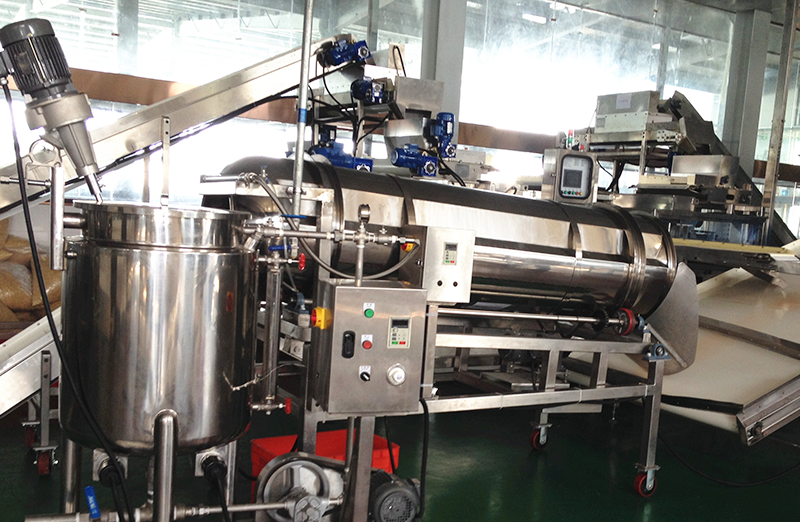Email: [email protected]
 2024.06.03
2024.06.03
 Industry News
Industry News
The snack noodle production line typically implements several measures to handle allergen control and prevent cross-contamination issues. Here's an overview of common practices:
Dedicated Production Areas: Within the snack noodle production facility, zoning principles are meticulously applied to delineate specific areas for processing different types of noodles or snacks. Each zone is carefully designed and equipped to handle particular ingredients or product variants, effectively segregating allergenic and non-allergenic production streams. By physically partitioning the production floor, the facility minimizes the risk of cross-contamination between allergens and non-allergens, thereby ensuring the integrity of the final products and compliance with stringent food safety regulations such as Hazard Analysis and Critical Control Points (HACCP) standards.
Cleaning and Sanitization Procedures: The production line adheres to rigorous cleaning and sanitization protocols that are meticulously documented and routinely audited. Prior to commencing each production run, a thorough cleaning regimen is executed, encompassing the disassembly and sanitization of equipment, surfaces, and conveyance systems. Food-grade cleaning agents and disinfectants are employed to eradicate any residues that may harbor allergens, with special attention paid to equipment crevices and hard-to-reach areas. Validation studies are conducted regularly to verify the effectiveness of cleaning procedures, employing swab testing and ATP (Adenosine Triphosphate) bioluminescence assays to ensure microbial cleanliness and allergen control.
Allergen Separation: The production line implements stringent measures to prevent cross-contact between allergenic and non-allergenic ingredients throughout the manufacturing process. Dedicated storage areas are designated for allergenic materials, utilizing clearly marked containers and storage bins to minimize the risk of mix-ups. Additionally, specialized handling equipment, such as allergen-specific hoppers and conveyors, are utilized to transport allergenic ingredients safely without commingling with other product streams. Equipment design features include allergen-resistant seals and barriers to further mitigate the potential for cross-contamination, ensuring the integrity of allergen-free products and preserving consumer trust in product safety and quality.
Color-Coding and Labeling: A comprehensive color-coding system is implemented across the production line to visually distinguish between allergenic and non-allergenic components, facilitating rapid identification and segregation by production staff. Color-coded equipment, utensils, and storage containers are utilized to prevent accidental cross-contact and contamination during ingredient handling and processing. Furthermore, all incoming raw materials and packaging components are meticulously labeled with allergen information, including clear indications of allergen presence or absence and precautionary allergen statements. This proactive approach to allergen labeling enhances transparency and consumer confidence, empowering individuals with food allergies to make informed purchasing decisions and minimize their risk of exposure to allergens.
Traceability Systems: The production line incorporates advanced traceability systems to track the movement of ingredients and products throughout the supply chain, enabling rapid identification and trace-back in the event of an allergen-related incident or product recall. Each batch of raw materials is assigned a unique identifier, which is recorded and tracked at every stage of production, from receipt to distribution. Real-time data capture and integration with enterprise resource planning (ERP) systems enable seamless information exchange and visibility across the production network, facilitating prompt decision-making and corrective actions. In the event of a suspected allergen contamination or quality issue, the traceability system enables precise identification of affected products and their corresponding production lots, allowing for targeted removal and disposition while minimizing the impact on unaffected products and preserving brand reputation.
